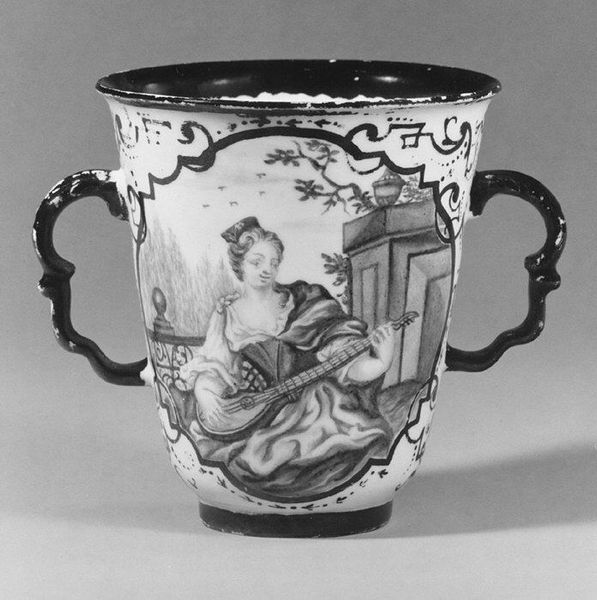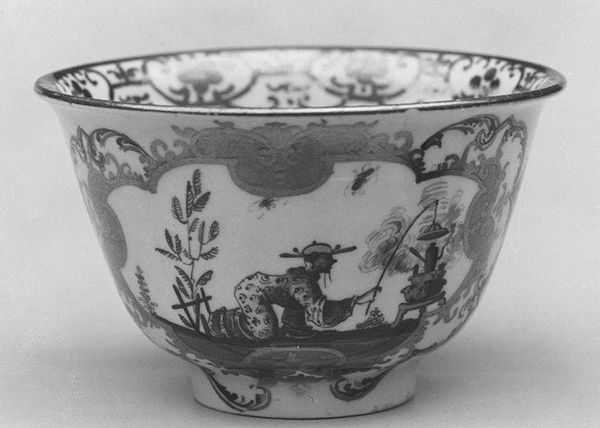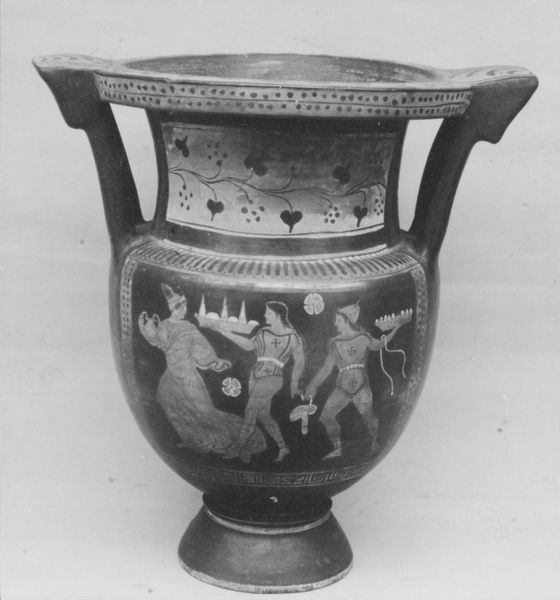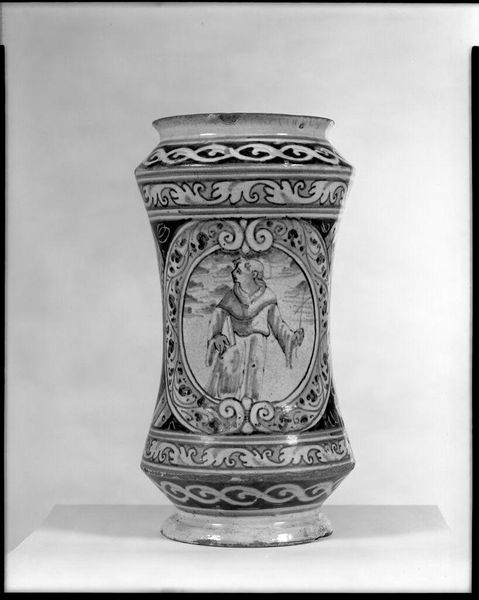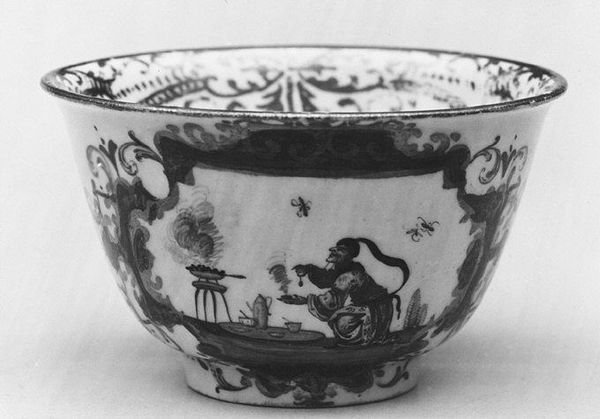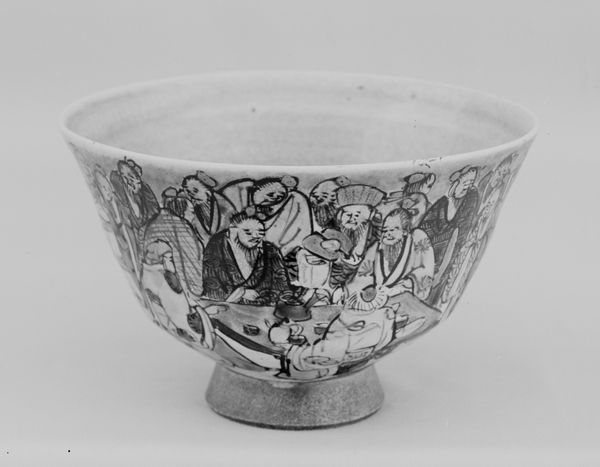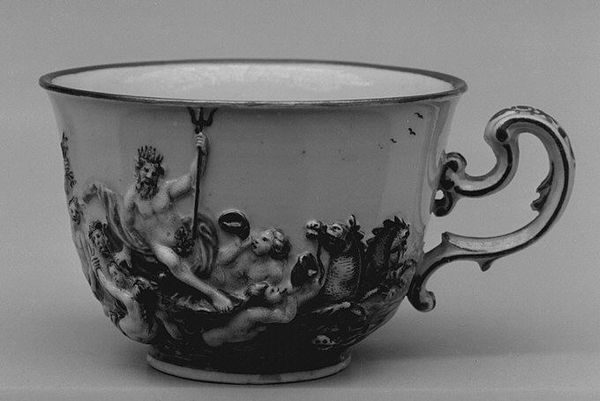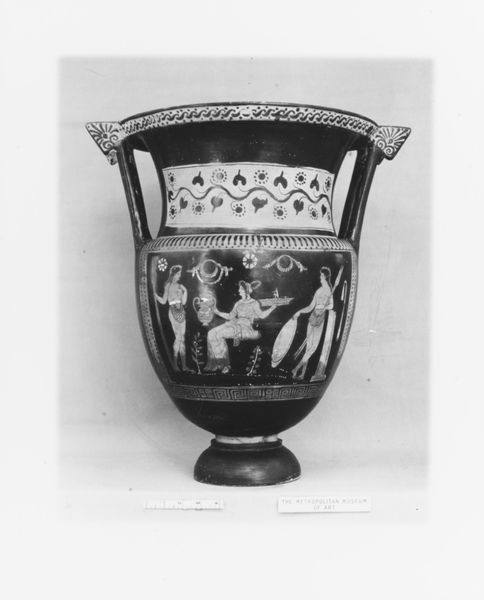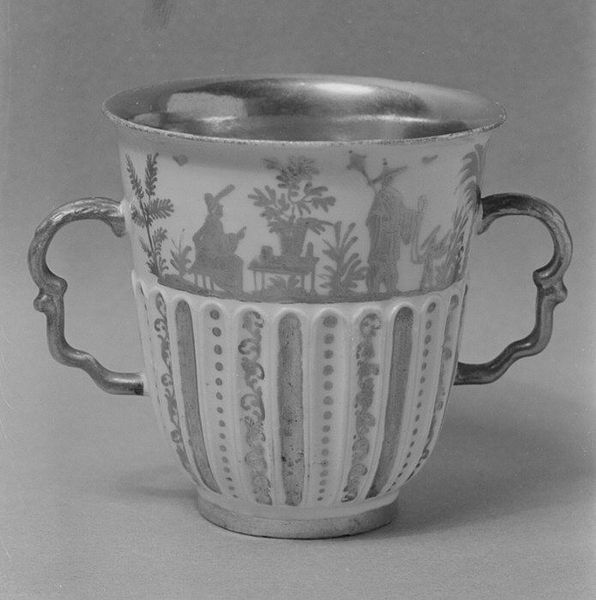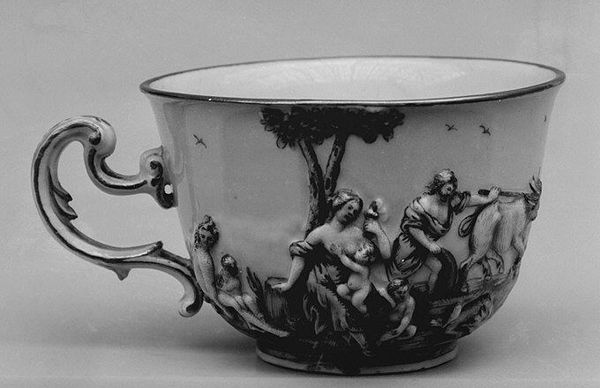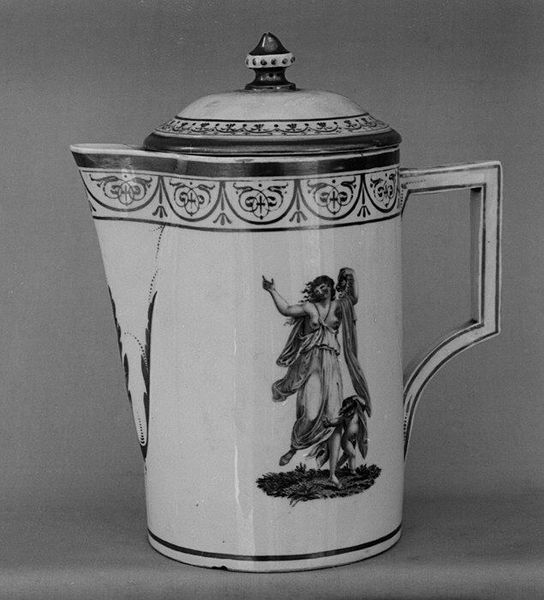
ceramic, porcelain, sculpture
#
neoclacissism
#
sculpture
#
ceramic
#
porcelain
#
sculpture
#
decorative-art
Dimensions: Height: 6 3/4 in. (17.1 cm)
Copyright: Public Domain
Curator: We are looking at a "Cachepot with Stand" crafted between 1800 and 1810 by Coalport. It resides here at the Metropolitan Museum of Art. It's a porcelain piece, placing it squarely within the decorative arts tradition. Editor: My first impression? Elegantly restrained. The monochromatic floral designs set against the glossy white porcelain project a sort of serene sophistication. It makes me think about social decorum in the 19th century. Curator: Exactly! The cachepot as a status symbol. The fashion for growing exotic plants indoors fueled demand for these ornate containers. Think about the colonial trade routes, the botanical explorations--this object subtly whispers of those power dynamics. The flowers, beautifully painted, hint at wealth, access and knowledge, too. Editor: That colonial connection is key. Looking closer, you realize the neoclassical details - the palmettes, the medallions - they're all referencing back to a supposed era of political virtue. So this pot is not just holding a plant. It embodies ideas about status, about global exchange and political ideals within a limited decorative setting. Curator: And it goes deeper! The decorative style itself reinforces societal norms. The perfectly balanced floral arrangement within a precisely defined square exemplifies an ideology that promotes controlled growth. Are we to take that controlled composition as representative of an aesthetic imposition onto the natural world? Is the act of planting, by design, representative of a social controlling element in this neoclassical expression? Editor: I see what you mean. I hadn't thought about it in terms of constraint and control so clearly. But let’s remember the cachepot's practical role: its purpose to display cultivated beauty. Within elite domestic settings, displaying refined possessions allowed women of high class to cultivate a space for intellectualism while also serving as examples for the common classes. Curator: Ultimately, examining this "Cachepot with Stand" takes us into issues concerning luxury, botanical science, empire, and how the decorative arts acted as both symbols of status, and mirrors of a period gripped by colonialism. Editor: And reminds us to examine the politics embedded within the pretty things, the hidden dialogues, in our history.
Comments
No comments
Be the first to comment and join the conversation on the ultimate creative platform.
